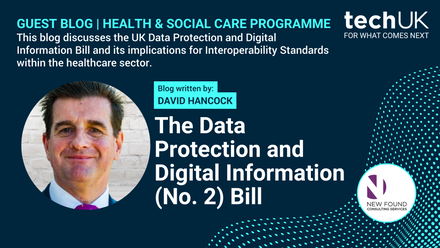The Impact of Digital Poverty & Exclusion on Women in Tech
In the UK, approximately 20% of children live in digital poverty, meaning they lack sufficient access to digital devices, connectivity, or skills for education and social inclusion. With 82% of jobs now requiring essential digital skills, this lack of digital access already puts young people at a disadvantage compared to their peers, limiting their ability to engage in online learning, use online resources, and develop technical skills essential for the workplace.
While a lack of devices, connectivity, and confidence affects many young people, women and girls are disproportionately impacted, facing additional gendered barriers that reduce their chances of entering digital careers. This insight explores how digital poverty affects girls & women, what this means for female participation in the tech sector, why it matters, and what more can be done to end gendered digital poverty & exclusion.
The gendered impact of early digital poverty and exclusion
Research consistently shows that digital poverty disproportionately affects women and girls worldwide. Women are 14–22% more likely than men to experience digital poverty, and 61% of people lacking basic digital skills are women. This disparity is exacerbated by economic, social, and cultural barriers from lower income levels and limited access to technology to entrenched gender stereotypes.
Ending digital poverty is therefore critical to achieving gender equality. Harnessing women with essential digital skills expands access to education, employment, and information, strengthening their ability to integrate fully into modern societies. As UN Women Executive Director Sima Bahous puts it - digital rights are women’s rights.
techUK recognise the importance of addressing gender inequalities within digital exclusion, as we push the government to examine how gender affects digital inclusion in our response to the Digital Inclusion Action Plan.
Why this affects women entering careers in tech
PwC research shows that the gender gap in technology begins at academia level, as early-stage digital exclusion diminishes girls’ interests, confidence, and preparation for careers in digital and tech sectors.
Girls are more likely to encounter stereotypes, a lack of confidence with digital tools, and fewer female role models in STEM subjects. Standards and expectations in subjects like mathematics are often higher for girls than boys, which negatively impacts their confidence and interest in STEM-related paths. Social perceptions of tech as a male-dominated field further discourage over a quarter of female students from pursuing related studies or careers. Overall meaning many girls leave education ill-equipped with the digital skills needed for the tech sector.
As of 2025, women represent only 20% of the UK tech workforce, with even lower proportions in core technical roles such as software engineering. Without sufficient exposure to digital devices and skills, many young women struggle to apply for tech jobs, progress within digital careers, and effectively participate in continuous learning opportunities that the tech industry demands. These systemic disadvantages prevent women from accessing career opportunities, reinforce inequality across the sector, and contribute to continued underrepresentation.
Why we need more women in tech
Ensuring more women and girls enter the tech sector goes beyond meeting diversity or DEI targets. Female representation is vital for inclusive innovation - for example: women’s participation in designing and developing FemTech products & services, as well as mitigating gender biases in AI systems, ensures technologies better serve all of society.
Greater female representation in leadership and development roles also amplifies diverse perspectives, making tech solutions more relevant and equitable. Economically, increasing women’s access to digital skills and tech careers helps close the gender pay gap, boosts productivity, supports female entrepreneurship, and increases overall financial independence for women. Proper female involvement ensures that the needs and priorities for women and girls are represented in the future of digital innovation.
Combating female digital poverty and creating pathways for digital inclusion
Addressing gendered digital poverty and exclusion requires long-term, coordinated action to break down barriers and create inclusive, accessible pathways into the tech sector. This includes:
- Early and accessible digital access: Ensure young girls, especially from disadvantaged backgrounds, have early-stage access to digital devices, internet connectivity, and digital skills training
- Targeted digital and STEM literacy for girls: Start promoting digital confidence, STEM education, and career awareness for girls from primary school age supported by peer learning, mentoring and female role models to counteract gender stereotypes
- Tackling systemic educational barriers: Address unequal learning standards and expectations between genders, remove potential biases in STEM teaching, and create supportive environments that build girls’ confidence and interest in digital careers
- Incentivising female careers in tech: Provide clear, accessible information about digital and tech jobs to counteract misperceptions that tech is not for certain groups – especially through engaging marginalised and underrepresented communities
Ending digital poverty offers multifaceted, long-term benefits that extend beyond simply providing universal access to technology. It’s an initiative essential for shaping the inclusiveness of the tech industry responsible for contributing to the digitalisation of society - as well as establishing long-term sustainable gender equality.
techUK are proud to be actively supporting this initiative. Through establishing our Digital Inclusion Working Group aimed at guiding our ongoing digital inclusion efforts, including engagement with our members and government, we are working to end digital poverty for all.







